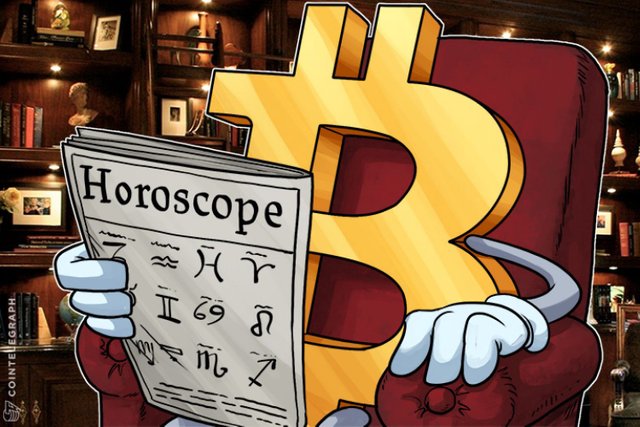Get rich by predicting the future... no really, it's all in a published paper
So I don't know if you are interested in this stuff, stuff which is mostly related to precognition, telepathy, psychokinesis...
I was (and still am) skeptical of these kinds of claims, and no doubt, there are a lot of false claims in this area.
However, some days ago I stumbled on this paper "Stock Market Prediction Using Associative Remote Viewing by Inexperienced Remote Viewers". Pretty hefty title, right?
It turns out that it's quite interesting. And to make it more credible it was conducted at the University of Colorado in Boulder. So it's not some shaky claim being made, but it's backed up by some serious research (which of course, still has to be looked at critically).
To sum the paper up, a group of people managed to predict the stock market swings in 10 out of 10 cases. Yes... that would be 10/10. That raised my eyebrows. Normally in these kinds of experiments a much lower success rate is established. But here 10 out of 10.
The way they did this was to average out the mistakes. This means that if 4 out of the 6 people's predictions were off, there were still 6 who got it right, which in turn resulted in a successful prediction.
So how does this work? It's called associative remote viewing. It's a technique originally thought up by Russel Targ and his team and describes a certain way of setting up a PSI experiment. I encourage you to research more about it. To briefly summarize it, people try to predict an image which is attached to the stock market flow. For example, if the stock market rises in the future, it is connected with a certain image (which has been chosen in advance) and people try to predict this image through remote viewing. If on average the group of people decide that the sketch of the remote viewing for that event correlates with the image which is attached to the rise of the stock market, then the advise would be to buy some stocks. Here is an image which shows the sketch for the image in question:

The really interesting part here is that PSI is used not just as an experiment to research more about whether it's real or not, but to instrumentalize it. Therefore the debate of whether PSI exists or not is shifted to the physical realm. If you can make money with PSI it doesn't really matter anymore if your critics say it's not possible because you will be enjoying that cocktail at the beach while reading through their critique.
This same technique should also in theory be usable for cryptocurrencies like bitcoin or steem. Will you try it out?
Have a look at the paper: http://psiphen.colorado.edu/Pubs/Smith14.pdf
@originalworks
The @OriginalWorks bot has determined this post by @tobetada to be original material and upvoted it!
To call @OriginalWorks, simply reply to any post with @originalworks or !originalworks in your message!
To enter this post into the daily RESTEEM contest, upvote this comment! The user with the most upvotes on their @OriginalWorks comment will win!
For more information, Click Here!
Special thanks to @reggaemuffin for being a supporter! Vote him as a witness to help make Steemit a better place!
This is nonsense. It would require new physics to be true, which means the evidence needs to be ironclad, and we're talking a sample size of 10 for a binary outcome, using subjective descriptions that needed to be interpreted by a researcher (probably a grad student). In all likelihood they just got lucky.
I would not be convinced even by an independent repetition of the results, but they don't even have that.
I'm also not sure a paper counts as "published" when the publication is the Journal of Scientific Exploration, which is full of pseudoscience. Take a look at what CSICOP says about them.
hey @undergroundecon, thank you for your time reading through the article. While I appreciate your criticism things like "this is nonsense" isn't particularly helpful in discussing a topic.
I have stated that I am skeptical of some of the claims made by PSI, but years of research have led me to believe that there is more to this phenomenon than "nonsense".
If you are looking for evidence, I suggest that you have a look at this book http://www.deanradin.com/supernormal.htm
You are right, the sample size is not very impressive. But it would still mean that getting a hit 10 times in a row would only have a probability of in 5^10= 1/1024. That's not exactly much. Again, for more statistical significant results I would point to the book above.
The subjective description of the drawings isn't a weak point here. It was necessary in order to translate a drawing into a binary event.
Why wouldn't you be convinced by an independent replication? Scientists should always have an open (yet of course critical) mind and inquire into the unknown.
The reason that the paper is published in this journal is because in the current scientific framework it is close to impossible to get this type of research published in a so called prestigious journal. Isn't the work rather than the journal more important? And how should science advance if all ideas stem from within the accepted established framework?
As I said, extraordinary claims require extraordinary evidence. PSI is at odds with everything we understand about physics and the way the brain works, so it needs a working theory that makes testable predictions.
The slogan "extraordinary claims require extraordinary evidence" generally makes sense. However, perhaps it is not such an extraordinary claim? One way to look at this is to think of PSI as a natural phenomena that has always existed. This line of reasoning has been explored by Rupert Sheldrake who has suggested in many experiments that PSI is a natural and not extraordinary phenomena. As evidence he points to the peculiar finding that people often know when someone is calling them on the phone or dogs know when their owner comes back home. These kinds of experiments may seem trivial, but they cannot be explained away at present as they have been replicated numerous times. For more information see his book The Science Delusion.
For present physics this may indeed seem hard to explain. But that is mostly true for classical physics. In quantum physics these kinds of phenomena are not so strange at all: instantaneous transfer of information, energy out of "nothing", even time in physics is not required to move only in one direction (as time is not found in the equations governing our reality (if I am wrong here, please correct me)).
Physics is constantly changing as can be seen through our history. It is only natural that our current way of understanding the world will be obsolete in a century. So we should be open for these kinds of things.
Hi again @tobetada, I just wanted to complement you on your rebuttal to the comment by @undergroundecon, it was very professionally done! I do not know if you are aware, and since I am fairly new I might be mistaken, but I think I read that you must spell the name of the person you are responding to exactly and put the "@" symbol in front of it or they will not be alerted that you have responded to their comment. Be a pity if you gave such a great reply and the person never knew about it and had no chance to man up to the logic:-) Have a great day!
Okay thanks for letting me know!
"I would not be convinced even by an independent repetition of the results, but they don't even have that."
Hi @undergroundecon, I agree with your skepticism, but stating at the outset that you would not take a scientific study seriously even if it were replicated independently is putting your bias before the ability to have an open mind. It takes a while for research to be replicated, and if shows the same findings while having proper methodology it deserves to be taken seriously.
I have spent decades in academia and agree that there are a lot of blanks to fill in before the findings of the quoted study can be considered mainstream. My point is that what you term psuedoscience is for many researchers completely legitimate, groundbreaking, and just as valid as mainstream journals (which have their own set of publishing biases). If you don't agree with a finding just say that you do not agree, don't call it nonsense or you might find yourself eating your words later. Read the paper first and give grounded criticism of the actual faults of the study, with suggestions for improvement.
It's not a bias. Extraordinary claims require extraordinary evidence. A replicated study is not enough to demonstrate new physics. There needs to be an explanation and prediction of other phenomena.
Hi @tobedata! This is a very intriguing post because, as you say, instead of trying to prove the existence of precognition they are operationalizing it through the technique of Associative Remote Viewing. I am definitely going to read the paper.

In answer to your question whether it could work on Bitcoin (can the findings can be generalized), I do not see why not if the methodology holds out with further experiments. I personally would need bigger groups and time line validity before i put any money into it, but considering the success of the technique against stock experts, trendwatching, quants, etc, one cannot argue that the study results top them all:-) Thanks for the post, upvoted, resteemed, followed:-)
image from Google
thanks :)